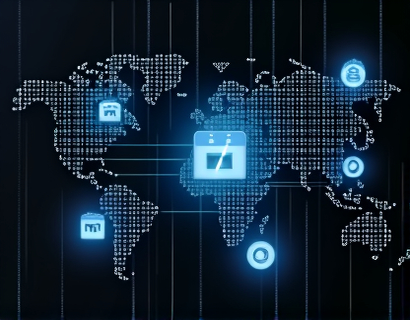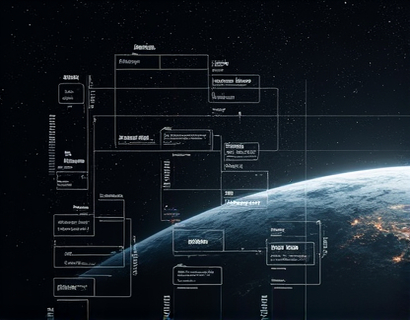Agricultural Software: Elevating Farm Efficiency and Productivity with Customized Tech Solutions
In recent years, the agricultural sector has witnessed a significant transformation driven by advanced software solutions. These technologies are revolutionizing the way farming businesses and professionals operate, leading to enhanced efficiency and productivity. The integration of customized tech solutions in agriculture is not just a trend but a necessity for staying competitive in a rapidly evolving market. This article delves into the various ways agricultural software is reshaping the industry, focusing on streamlined processes, improved data management, and informed decision-making.
Streamlined Processes
The first and most immediate benefit of agricultural software is the streamlining of processes. Traditional farming methods often involve manual and time-consuming tasks, from planting and harvesting to inventory management and financial tracking. Customized software solutions automate these tasks, reducing the need for manual intervention and minimizing human error. For instance, precision agriculture tools use GPS and sensor technology to optimize field operations, ensuring that every step, from seed planting to crop monitoring, is executed with precision and efficiency.
One of the key areas where processes are streamlined is in the management of farm equipment. Software solutions can track the maintenance schedules, usage patterns, and performance metrics of machinery, allowing farmers to schedule repairs and replacements proactively. This not only extends the lifespan of equipment but also reduces downtime, ensuring that operations run smoothly. Additionally, software can integrate with various devices and sensors to monitor soil moisture, temperature, and other environmental factors, providing real-time data that helps in making timely decisions.
Improved Data Management
Data management is another critical aspect where agricultural software excels. The sheer volume of data generated in modern farming operations can be overwhelming, but with the right tools, this data can be harnessed to drive better outcomes. Customized software solutions offer robust data management systems that can store, organize, and analyze vast amounts of information. This includes data on crop yields, weather patterns, market trends, and more.
Cloud-based platforms are particularly beneficial in this regard, as they allow farmers to access and manage data from anywhere, at any time. This flexibility is crucial for making informed decisions quickly. For example, farmers can monitor crop health and soil conditions remotely, adjusting irrigation and fertilization schedules as needed. This level of data accessibility and control was previously unimaginable in traditional farming practices.
Informed Decision-Making
The true power of agricultural software lies in its ability to support informed decision-making. With access to real-time and historical data, farmers can make more accurate predictions and strategic decisions. Data analytics tools within these software solutions can process complex datasets to identify trends, patterns, and insights that would be difficult to discern manually. This data-driven approach enables farmers to optimize resource allocation, reduce costs, and increase productivity.
For instance, predictive analytics can forecast crop yields based on current conditions and historical data, helping farmers plan for harvests and market sales more effectively. Similarly, financial management modules can provide detailed reports on expenses, revenues, and profit margins, allowing farmers to make informed financial decisions. This level of insight is invaluable in a market where margins can be thin and competition is fierce.
Enhanced Crop Management
Crop management is a critical component of successful farming, and agricultural software plays a pivotal role in this area. Customized solutions offer tools for precision farming, which involves using technology to manage variability in crops and soil. This approach ensures that each part of the field receives the exact amount of water, fertilizer, and other inputs needed, leading to healthier crops and higher yields.
Drones equipped with cameras and sensors can capture detailed images of fields, providing high-resolution data on crop health. This data can be analyzed to identify areas that require attention, such as spots with nutrient deficiencies or pest infestations. Farmers can then apply targeted treatments, reducing the use of chemicals and minimizing environmental impact. Additionally, software can schedule and automate these treatments, further streamlining the process.
Supply Chain Optimization
Beyond the farm, agricultural software also optimizes the supply chain, ensuring that products move efficiently from the field to the market. Supply chain management software can track the entire journey of a product, from planting to delivery. This end-to-end visibility helps in identifying bottlenecks and inefficiencies, allowing for timely interventions.
For example, real-time tracking of shipments can ensure that produce reaches markets fresh and on schedule. Inventory management tools can monitor stock levels, preventing overstocking or stockouts. This level of control not only reduces waste but also improves customer satisfaction by ensuring a steady supply of high-quality products.
Market Access and Sales
Agricultural software is not limited to farm operations; it also enhances market access and sales for farming businesses. E-commerce platforms integrated with farming software allow farmers to sell their products directly to consumers or other businesses, bypassing traditional intermediaries. This direct-to-consumer model can lead to higher profit margins and stronger relationships with customers.
Moreover, market analysis tools within these platforms provide insights into market trends, consumer preferences, and competitor activities. Farmers can use this information to adjust their production and marketing strategies, ensuring they meet market demands and stay ahead of the competition. For instance, if data shows a growing demand for organic produce, farmers can shift their focus to organic farming practices and target the corresponding market segments.
Sustainability and Environmental Impact
The environmental impact of farming practices is a growing concern, and agricultural software can play a significant role in promoting sustainability. By optimizing resource use and reducing waste, these solutions help farmers minimize their ecological footprint. Precision agriculture techniques, for example, ensure that water and fertilizers are used efficiently, reducing runoff and pollution.
Additionally, software can help farmers adopt more sustainable practices by providing guidelines and best practices based on data-driven insights. This includes recommendations for crop rotation, soil conservation, and integrated pest management. By embracing these practices, farmers can not only improve their operations but also contribute to the broader goal of sustainable agriculture.
Challenges and Considerations
While the benefits of agricultural software are clear, there are also challenges and considerations that farmers and agricultural professionals must address. One of the primary concerns is the initial cost of implementing these technologies. High-quality software solutions can be expensive, and not all farming operations may have the budget to invest in them. However, the long-term benefits in terms of increased efficiency and productivity often justify the investment.
Another challenge is the need for technical expertise to effectively use these tools. Farmers and their staff may require training to fully leverage the capabilities of the software. This is where customized solutions and provider support become crucial, offering tailored training and ongoing assistance to ensure smooth adoption and use.
Future Trends
Looking ahead, the future of agricultural software is promising, with several emerging trends set to further elevate farm efficiency and productivity. One such trend is the integration of artificial intelligence (AI) and machine learning (ML) into farming operations. AI can enhance predictive analytics, enabling more accurate forecasts and personalized recommendations. For example, AI-powered systems can analyze satellite imagery to detect early signs of crop diseases, allowing for prompt intervention.
Another trend is the development of Internet of Things (IoT) devices specifically designed for agricultural use. These devices can provide continuous monitoring of various parameters, from soil moisture to weather conditions, feeding real-time data into the software. This level of connectivity and automation is set to transform farming into a more data-centric and intelligent industry.
Furthermore, the rise of blockchain technology in agriculture holds potential for enhancing transparency and traceability in the supply chain. By recording every step of the production and distribution process on a blockchain, farmers can provide verifiable proof of their practices, building trust with consumers and meeting regulatory requirements.
Conclusion
In conclusion, agricultural software is a game-changer for the farming industry, offering a range of benefits that extend from streamlined processes and improved data management to informed decision-making and enhanced sustainability. As technology continues to advance, the potential for further innovation and improvement is vast. By embracing these customized tech solutions, farming businesses and professionals can not only enhance their operations but also contribute to a more efficient, productive, and sustainable agricultural sector.










































